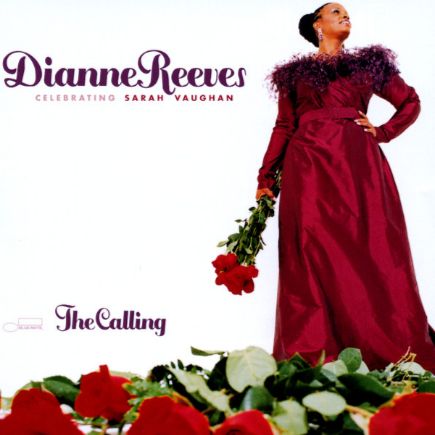If You Could See Me Now: élégie bebop et transition historique
Composée en 1946 par le pianiste Tadd Dameron, figure essentielle du bebop, If You Could See Me Now marque un tournant dans l’histoire du jazz vocal. Créée pour Sarah Vaughan, fidèle collaboratrice du compositeur, la chanson bénéficie également de paroles signées Carl Sigman et, en partie, de Vaughan elle-même. Dès les premières mesures, elle impose un climat intime et suspendu, porté par une mélodie enveloppante et une écriture harmonique d’une rare sophistication.
Dameron, influencé par les compositeurs classiques européens autant que par les pionniers du jazz moderne, tisse ici une trame sonore à la fois élégante et émotive, où chaque accord semble chargé d’un profond sentiment de nostalgie. Ce qui distingue ce morceau, c’est cette alliance subtile entre lyrisme expressif et complexité structurelle — un équilibre parfaitement incarné par l’interprétation de Vaughan, à la fois retenue, audacieuse et bouleversante.
If You Could See Me Now incarne un moment charnière: celui du passage du swing au bebop. Dans l’Amérique de l’après-guerre, une nouvelle génération de musiciens s’affranchit des conventions du swing pour inventer un langage plus libre, plus nerveux, plus personnel. Dameron s’inscrit pleinement dans ce mouvement, proposant ici une œuvre qui conjugue innovation harmonique et sensibilité mélodique.
Dianne Reeves: l’émotion renouvelée
En septembre 2000, à Burbank (Californie), Dianne Reeves enregistrait une version magistrale de If You Could See Me Now pour l’album The Calling: Celebrating Sarah Vaughan. Conçu comme un hommage à la ‘Divine’ Sarah, ce projet met en lumière la capacité de Reeves à dialoguer avec un héritage immense, tout en affirmant sa propre identité artistique.
Dans l’interprétation de Dianne Reeves, cette tradition se prolonge avec une intensité nouvelle. Sa voix, à la fois ample et nuancée, épouse chaque inflexion de la ligne mélodique, en faisant surgir une palette de sentiments allant de la nostalgie à la tendresse la plus intime. Elle ne cherche pas à imiter son illustre aînée, mais à capter l’esprit de la chanson pour le réinventer dans son propre langage expressif.
Reeves est entourée ici d’un ensemble remarquable: Mulgrew Miller, pianiste au toucher élégant, apporte des harmonies souples et lumineuses; Reginald Veal soutient l’architecture du morceau avec une basse profonde et agile; Greg Hutchinson insuffle une respiration discrète mais essentielle à la batterie; enfin, l’orchestre dirigé par Billy Childs enveloppe la voix de textures orchestrales raffinées, conférant à l’ensemble une ampleur cinématographique.
If You Could See Me Now: elegía bebop y transición histórica
Compuesta en 1946 por el pianista Tadd Dameron, figura esencial del bebop, If You Could See Me Now marca un punto de inflexión en la historia del jazz vocal. Creada para Sarah Vaughan, habitual colaboradora del compositor, la canción cuenta también con letra de Carl Sigman y, en parte, de la propia Vaughan. Desde los primeros compases, establece una atmósfera íntima y suspendida, sostenida por una melodía envolvente y una escritura armónica de excepcional sofisticación.
Dameron, influido tanto por los compositores clásicos europeos como por los innovadores del jazz moderno, teje aquí una textura sonora elegante y emotiva, en la que cada acorde parece cargado de una profunda nostalgia. Lo que distingue a esta pieza es su sutil equilibrio entre lirismo expresivo y complejidad estructural, encarnado con perfección en la interpretación de Vaughan: contenida, audaz y conmovedora.
If You Could See Me Now representa un momento clave: el paso del swing al bebop. En la América de la posguerra, una nueva generación de músicos buscaba liberarse de las convenciones del swing para explorar un lenguaje más libre, más nervioso y más personal. Dameron se inscribe de lleno en esta dinámica, ofreciendo aquí una obra que combina innovación armónica con una intensa sensibilidad melódica.
Dianne Reeves: la emoción renovada
En septiembre de 2000, en Burbank (California), Dianne Reeves grabó una versión magistral de If You Could See Me Now para el álbum The Calling: Celebrating Sarah Vaughan. Concebido como un homenaje a la “Divina” Sarah, este proyecto pone de relieve la capacidad de Reeves para dialogar con un legado inmenso, al tiempo que afirma su propia identidad artística.
En la interpretación de Dianne Reeves, esta tradición se prolonga con una intensidad renovada. Su voz, amplia y matizada, abraza cada inflexión de la línea melódica, haciendo surgir una paleta de sentimientos que van de la nostalgia a la ternura más íntima. No busca imitar a su ilustre predecesora, sino captar el espíritu de la canción y reinventarlo en su propio lenguaje expresivo.
Reeves está acompañada aquí por un conjunto notable: Mulgrew Miller, pianista de toque elegante, aporta armonías flexibles y luminosas; Reginald Veal sostiene la arquitectura de la pieza con un contrabajo profundo y ágil; Greg Hutchinson insufla una respiración discreta pero esencial en la batería; y finalmente, la orquesta dirigida por Billy Childs envuelve la voz con texturas orquestales refinadas, otorgando al conjunto una amplitud cinematográfica.
If You Could See Me Now: elegia bebop e svolta storica
Composta nel 1946 dal pianista Tadd Dameron, figura centrale del bebop, If You Could See Me Now segna una svolta nella storia del jazz vocale. Scritta per Sarah Vaughan, collaboratrice abituale del compositore, la canzone porta anche la firma di Carl Sigman e, in parte, della stessa Vaughan. Fin dalle prime battute, impone un’atmosfera intima e sospesa, sostenuta da una melodia avvolgente e da una scrittura armonica di rara raffinatezza.
Dameron, influenzato sia dai compositori classici europei che dai pionieri del jazz moderno, tesse qui una trama sonora elegante ed emotiva, in cui ogni accordo sembra carico di un profondo senso di nostalgia. Ciò che distingue questo brano è l’equilibrio sottile tra lirismo espressivo e complessità strutturale — un equilibrio incarnato alla perfezione dall’interpretazione di Vaughan, al tempo stesso misurata, audace e toccante.
If You Could See Me Now rappresenta un momento cruciale: il passaggio dallo swing al bebop. Nella società americana del dopoguerra, una nuova generazione di musicisti si emancipa dalle convenzioni dello swing per esplorare un linguaggio più libero, nervoso e personale. Dameron aderisce pienamente a questo spirito, offrendo un’opera che coniuga innovazione armonica e sensibilità melodica.
Dianne Reeves: l’emozione rinnovata
Nel settembre 2000, a Burbank (California), Dianne Reeves incise una versione magistrale di If You Could See Me Now per l’album The Calling: Celebrating Sarah Vaughan. Concepite come un omaggio alla “Divina” Sarah, questo progetto mette in luce la capacità di Reeves di dialogare con un’eredità immensa, affermando al tempo stesso la propria identità artistica.
Nell’interpretazione di Dianne Reeves, questa tradizione si prolunga con una nuova intensità. La sua voce, ampia e sfumata, abbraccia ogni inflessione della linea melodica, facendo emergere una gamma di sentimenti che vanno dalla nostalgia alla tenerezza più intima. Non cerca di imitare la sua illustre predecessora, ma di cogliere lo spirito del brano e reinventarlo con il proprio linguaggio espressivo.
Reeves è affiancata qui da un ensemble notevole: Mulgrew Miller, pianista dal tocco elegante, offre armonie flessibili e luminose; Reginald Veal sostiene l’architettura del pezzo con un contrabbasso profondo e agile; Greg Hutchinson infonde un respiro discreto ma essenziale alla batteria; infine, l’orchestra diretta da Billy Childs avvolge la voce con raffinate trame orchestrali, conferendo all’insieme un’ampiezza cinematografica.
If You Could See Me Now: bebop elegy and historical turning point
Composed in 1946 by pianist Tadd Dameron, a key figure in bebop, If You Could See Me Now marks a turning point in the history of vocal jazz. Written for Sarah Vaughan, Dameron’s frequent collaborator, the song features lyrics by Carl Sigman and, in part, by Vaughan herself. From the opening bars, it creates an intimate, suspended atmosphere, shaped by an enveloping melody and a remarkably sophisticated harmonic design.
Dameron—deeply influenced by both European classical composers and the avant-garde jazz innovators of his time—weaves a sonic fabric that is at once elegant and emotional, where every chord seems infused with longing and nostalgia. What sets this piece apart is its delicate balance between expressive lyricism and structural complexity, a balance Vaughan embodies with restraint, boldness, and deep emotional power.
If You Could See Me Now captures a pivotal moment: the shift from swing to bebop. In postwar America, a new generation of musicians sought to break free from swing’s conventions to explore a more personal, restless, and harmonically adventurous language. Dameron fully embraced this movement, offering here a work that fuses harmonic innovation with melodic sensitivity.
Dianne Reeves: renewed emotion
In September 2000, in Burbank, California, Dianne Reeves recorded a masterful version of If You Could See Me Now for the album The Calling: Celebrating Sarah Vaughan. Conceived as a tribute to the “Divine” Sarah, this project highlights Reeves’s ability to engage with an immense legacy while affirming her own artistic identity.
In Dianne Reeves’s interpretation, this tradition is carried forward with renewed intensity. Her voice, both expansive and nuanced, embraces every inflection of the melodic line, unveiling a palette of emotions ranging from nostalgia to the most intimate tenderness. She does not attempt to imitate her illustrious predecessor but instead captures the spirit of the song and reinvents it in her own expressive language.
Reeves is joined here by a remarkable ensemble: Mulgrew Miller, a pianist with an elegant touch, provides supple and luminous harmonies; Reginald Veal supports the structure of the piece with a deep and agile bass; Greg Hutchinson brings a discreet yet essential breath to the drums; and finally, the orchestra conducted by Billy Childs surrounds the voice with refined orchestral textures, giving the performance a cinematic breadth.


